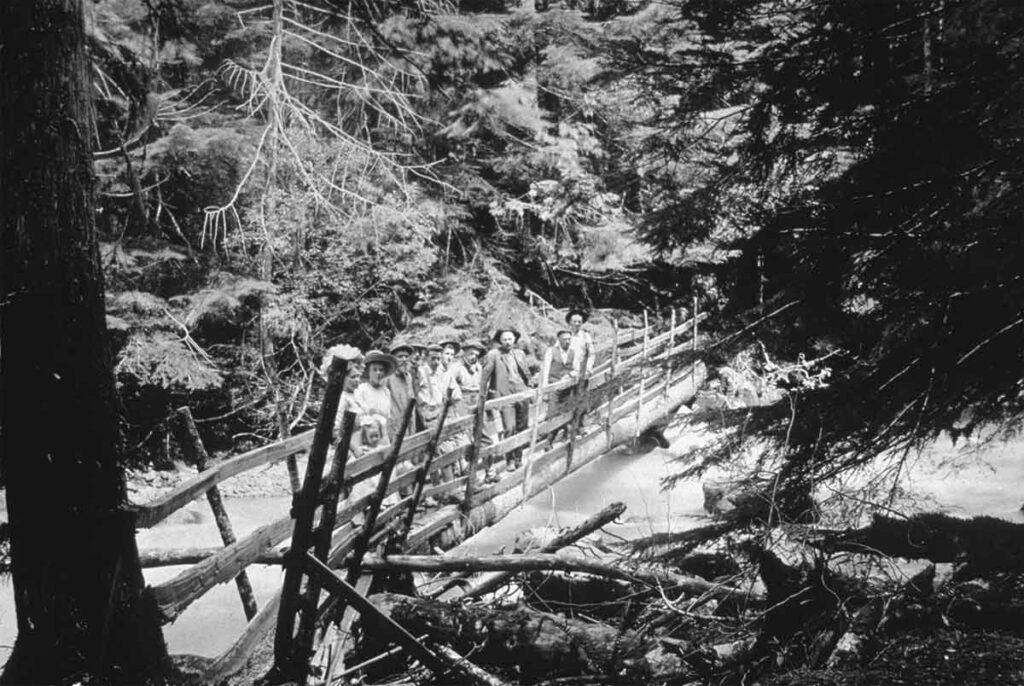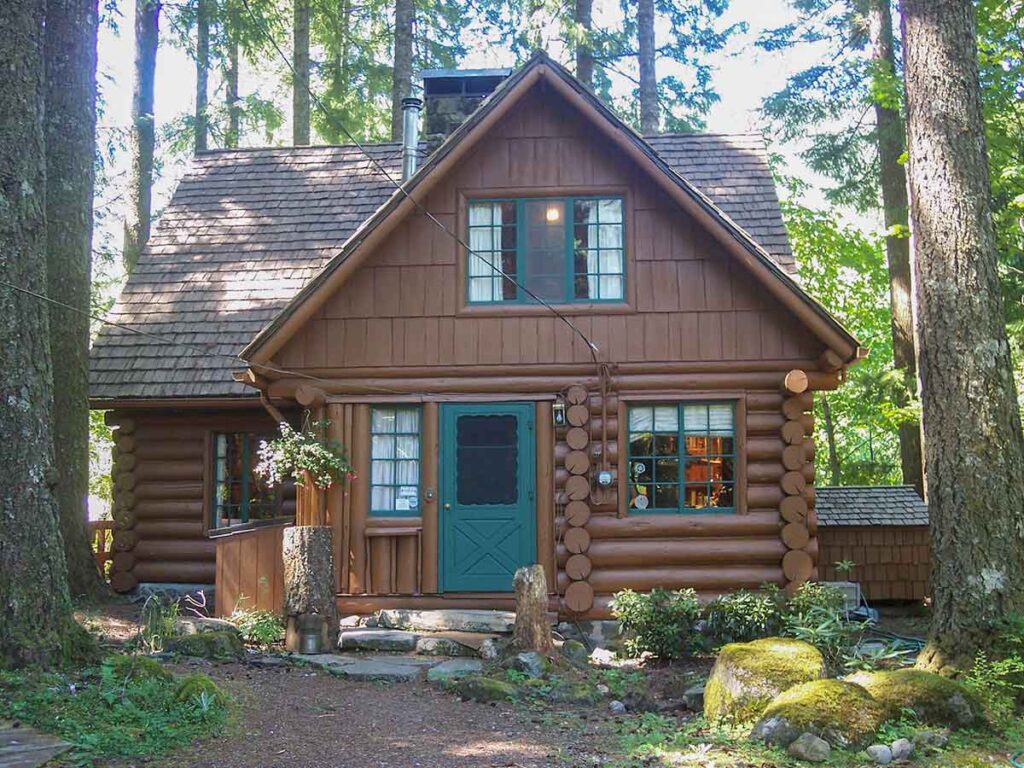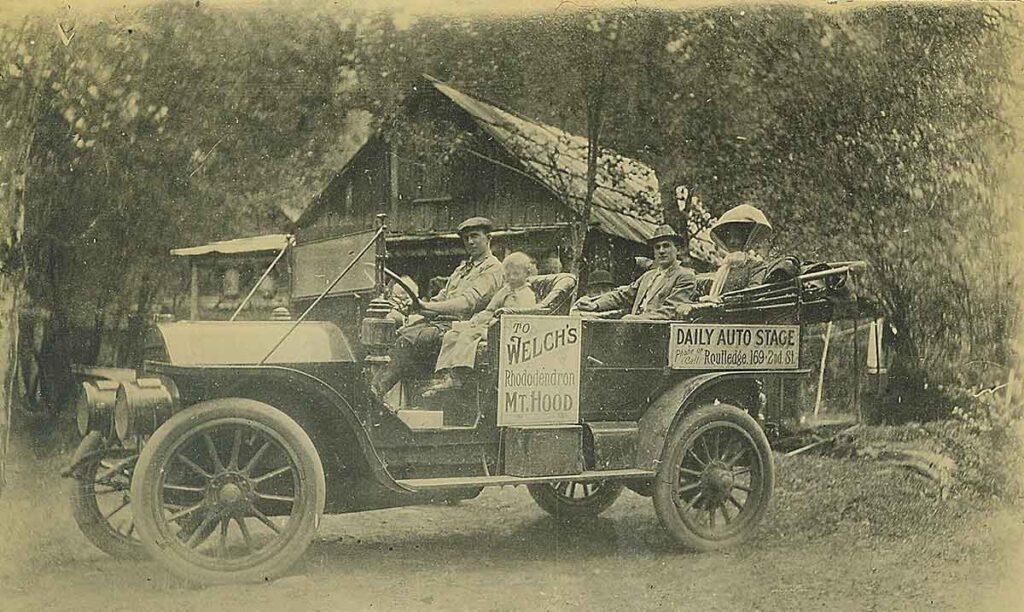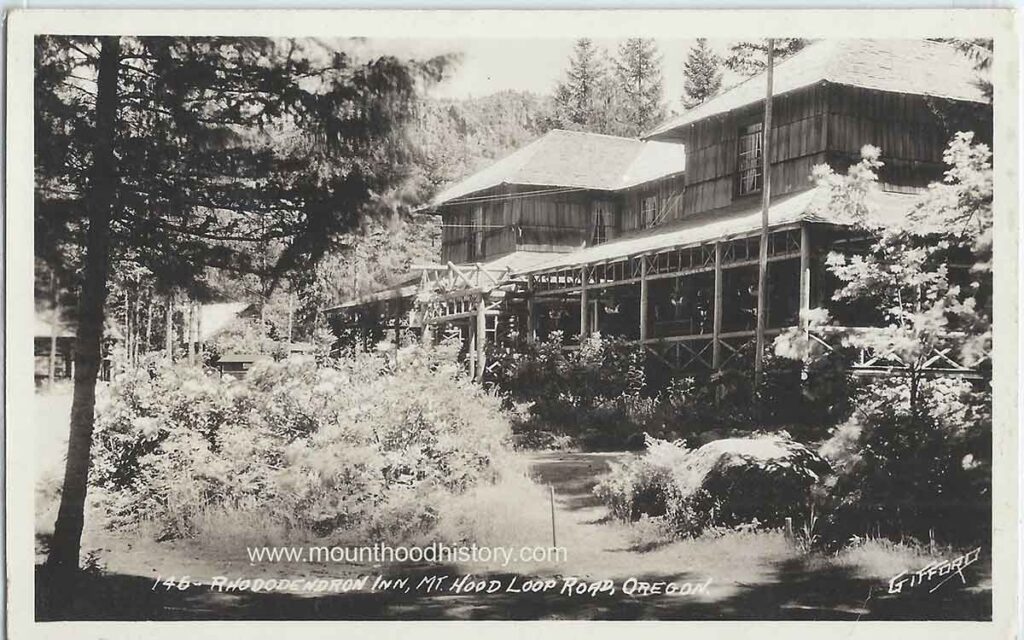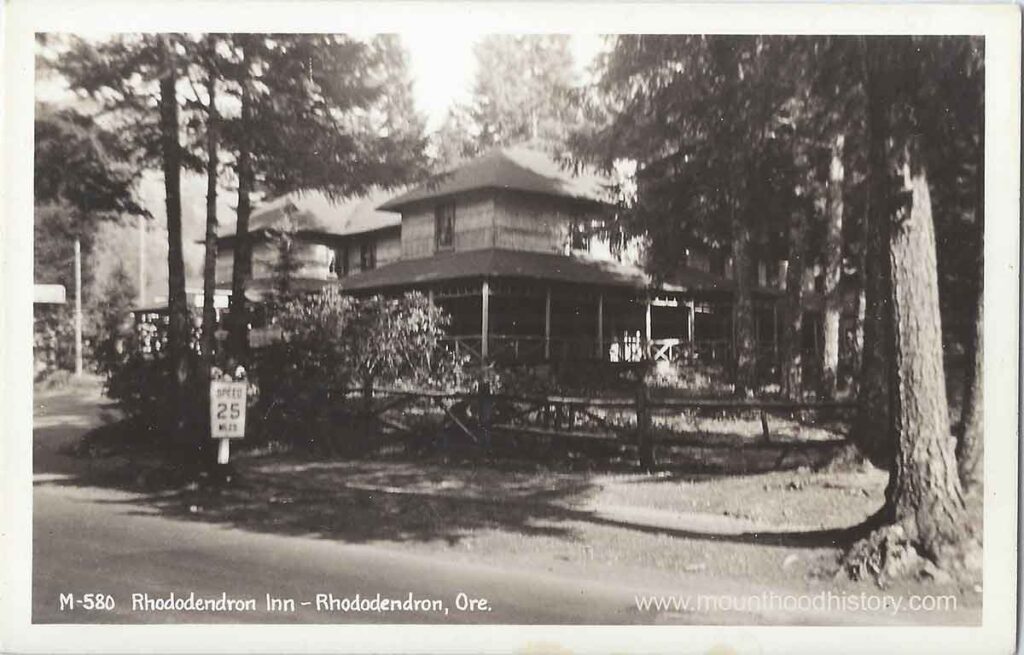I’ve spent a lot of time talking with old-timers and the family members of folks who’ve lived up here in the Mountain Community for years. In one or two conversations, I’d heard tell of a woman who gained local notoriety for killing a bear that invaded her space with a garden hoe.
Henry and Fred Steiner Deaths in the Mount Hood Forest
Henry Steiner was known throughout the Mount Hood region as a master builder of log homes. He and his wife, Mollie, raised their family in Brightwood, where Henry built dozens of rustic cabins that still stand today.
Mount Hood Auto Stages: From Rugged Roads to Modern Highways
In the early 20th century, long before travelers zipped up Highway 26 to the ski lifts and resorts of Mount Hood, the trip to the mountain was rugged and uncertain. The road, built on the bones of the old Barlow Trail, was steep, narrow, and either muddy or dusty depending on the season.
Susette Franzetti Rhododendron Oregon – Pioneer Innkeeper
Before Rhododendron, Oregon, became a known mountain getaway, Susette Franzetti helped build its identity. A Swiss hotelier with European training, she transformed the area with hospitality, real estate, and resilience.
Emil Franzetti Rhododendron Inn – Mount Hood’s Gourmet Chef
Before ski resorts dotted the highway and travelers packed the trailheads, Emil Franzetti of the Rhododendron Inn brought elegance and fine cuisine to Oregon’s Mount Hood region.

